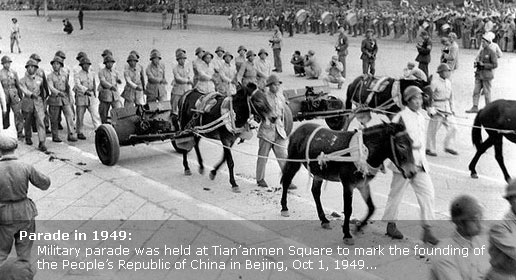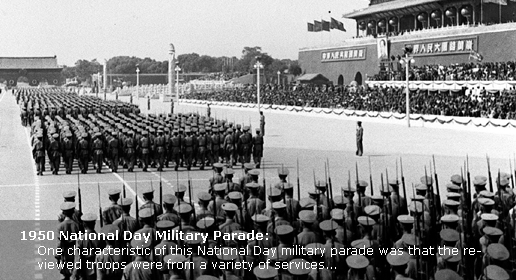Achievements
Jumbo jet, high-speed train show 'China drive'
(Xinhua)
Updated: 2009-10-01 15:06
China's fast changing transportation system could not be better reflected in its homegrown high-speed trains and jumbo jets project, as their sculptures were displayed on a float moving through the crowds Thursday morning at a pageant marking the 60th founding anniversary of the People's Republic.
Sculptures of trains, airplanes and automobiles are placed on a model of multi-layer overpass, which signals China's capability of making the most leading transportation tools and its position as having the world's second longest highway after the United States.
Escorting the float, a formation of train attendants dressed in blue uniforms moved past the Tian'anmen Square.
China's transportation system has experienced major growth in the past six decades, and notably after the 1980s, as hefty government spending has been pumped into the constructions of highways, railways and airports to facilitate double-digit economic growth and boost employment.
Trains are the most-used transportation means for medium and long travels in China as 1.46 billion trips were made last year.
Train speed has been boosted six times since 1949, and the world's fastest high speed trains are running between Beijing and Tianjin at 350 kilometers per hour.
Besides, the 1,956-kilometer Qinghai-Tibet Railway, the world's highest railway that links remote Tibet plateau and other parts of the country for the first time in history, helps push forward regional economic and cultural exchanges on an unprecedented scale.
By the end of 2008, a road network totaling 3.73 million kilometers had reached 99.24 percent of townships and 92.86 percent of villages.
Air travel also saw significant growth as nearly 200 million trips had been made by the end of last year.
China's airlines had 1,254 jets flying on 1,532 routes at the end of 2008. The country's jet makers had embarked on a plan to manufacture jumbo aircraft to rival Boeing and Airbus.
To ward off the global financial crisis, the Chinese government announced a 4-trillion-yuan stimulus package last November, which included 1.8 trillion yuan of investment to upgrade roads, railways and airports.
The 600 billion yuan of railway investment in 2009 is expected to create 6 million jobs and add 1.5 percentage points to GDP growth, said Yang Zhongmin, an official with the planning department of the Ministry of Railways.











